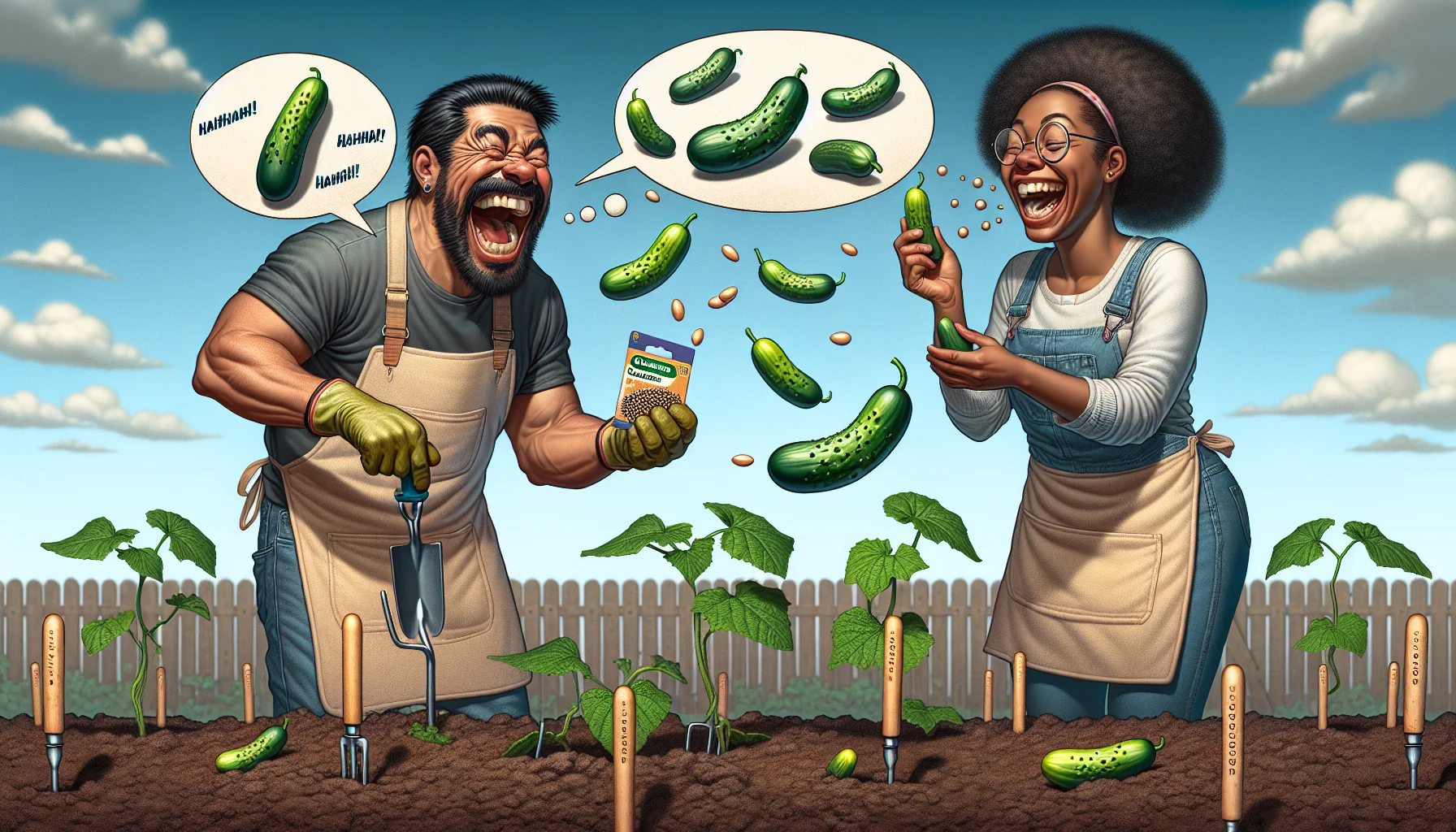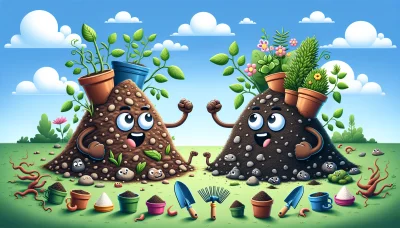How to plant cucumber seeds Quiz
Test Your Knowledge
Question of
How to Plant Cucumber Seeds: A Beginner's Guide
Gardening is not only a rewarding hobby but also a way to ensure you have fresh and organic produce right at your doorstep. Starting with something as simple as cucumber seeds can introduce you to the joys and benefits of gardening. Planting cucumber seeds is straightforward and suitable for beginners. This guide will cover the basics of soil preparation, seed sowing, and the initial care needed to grow cucumbers successfully. Embracing gardening can lead to a healthier lifestyle and help you connect with nature in your own backyard.
Choosing the Right Cucumber Seeds
When it comes to planting cucumbers, selecting the right seeds is crucial for a successful harvest. There are several types of cucumber seeds available, each suited for different growing conditions and uses. Slicing cucumbers are great for fresh eating, while pickling cucumbers are perfect for, well, pickling. There are also burpless varieties that are easier to digest for some people. When selecting seeds, consider the climate of your area and the space available in your garden. Some cucumber varieties are designed to grow in compact spaces or even vertically, making them ideal for small gardens or containers. It's also important to look for seeds that are disease-resistant to ensure a healthy crop. Lastly, consider the maturity time of the cucumber variety you choose to ensure it fits within your growing season. With a little research and careful selection, you can find the perfect cucumber seeds for your garden.
When to Plant Cucumber Seeds
The best time to plant cucumber seeds varies depending on your climate zone and local weather conditions. In general, cucumbers thrive in warm soil and temperatures, so planting should occur after the last frost date in your area. For most temperate regions, this means sowing seeds directly into the garden in late spring or early summer. Gardeners in warmer climates can often plant earlier or enjoy multiple planting windows throughout the year. It's crucial to ensure that the soil temperature is consistently above 60°F (15°C) for optimal germination. In cooler climates, starting seeds indoors 3-4 weeks before the last frost date is a common practice to extend the growing season.
Preparing the Soil for Cucumber Seeds
To ensure a bountiful cucumber harvest, it is crucial to prepare your garden soil with care. Start by choosing a sunny spot as cucumbers thrive in warmth. The soil should be loose and well-draining to prevent waterlogging, which can harm the seeds. A mix of garden soil, compost, and peat moss is ideal for achieving the right texture and fertility. Cucumbers prefer a slightly alkaline to neutral pH, so aim for a soil pH level between 6.0 and 7.0. You can easily test your soil's pH with a home testing kit available at most garden centers. If the pH is too low, consider adding garden lime to raise it, or if it's too high, sulfur can help lower it to the desired range. Fertilization is another key aspect; incorporating a balanced 10-10-10 fertilizer into the soil before planting will provide the necessary nutrients for your cucumber plants to flourish. Remember, the effort you put into preparing your soil will pay off with the healthy growth and fruitful yield of your cucumber plants.
Planting Your Cucumber Seeds Step by Step
- Choose a sunny, well-drained location in your garden.
- Prepare the soil by loosening it to a depth of at least 12 inches and mixing in compost or aged manure to enrich it.
- Create raised soil beds or rows, about 6 inches high, to improve drainage and soil warmth.
- Water the soil beds thoroughly a day before planting to ensure the soil is moist but not waterlogged.
- Plant the cucumber seeds directly into the soil, placing them 1 inch deep.
- Space the seeds about 6 inches apart in rows, with each row spaced 3 feet apart to allow for growth and air circulation.
- After planting, gently water the soil to settle the seeds.
- Cover the soil with a thin layer of mulch to retain moisture and regulate soil temperature.
- Keep the soil consistently moist but not soggy, watering at the base of the plants to avoid wetting the foliage.
- As the cucumber plants grow, provide support with trellises or stakes to encourage upward growth and healthy air circulation.
Caring for Your Cucumber Plants
To ensure your cucumber plants thrive, it's essential to provide them with consistent care throughout their growing season. Watering plays a crucial role; cucumbers prefer moist but not waterlogged soil, so aim to provide them with 1 to 2 inches of water per week, increasing the amount during hot, dry periods. Mulching around the plants can help retain soil moisture and suppress weeds, which compete for nutrients and water. Regular weeding is necessary to keep these unwanted plants at bay. Additionally, pest control is vital for healthy cucumber plants. Monitor for common pests such as cucumber beetles and aphids, and consider using organic pesticides or natural predators to manage infestations. With proper watering, weeding, and pest control, your cucumber plants will produce bountiful and tasty cucumbers.
Harvesting and Storing Cucumbers
Cucumbers reach their peak harvest time when they are medium-sized, firm, and uniformly green. The best time to pick cucumbers is early in the morning before the sun starts to heat them up. This ensures they are crisp, hydrated, and at their peak flavor. Harvesting should be done carefully to avoid damaging the vine; use a pair of scissors or a sharp knife to cut the cucumber off the plant rather than pulling them. Regular harvesting encourages the plant to produce more cucumbers.
For storing, cucumbers should be kept in the refrigerator. Ideally, wrap them in a moist towel and place them in a perforated plastic bag. This method helps maintain their moisture without becoming too soggy. Avoid storing cucumbers near ethylene-producing fruits like tomatoes, melons, and bananas as this can cause them to spoil faster. Cucumbers typically last about a week when stored properly, but it's best to use them as soon as possible to enjoy their freshness.












